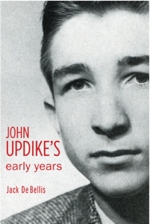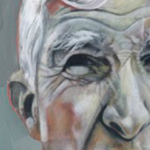When the Updikes moved to the Plowville farm, they sold the Shillington house at 117 Philadelphia Avenue to Dr. John and Mrs. Grace Hunter, who lived there with their family for nearly 45 years. The doctor added a single-story attached annex to use as his office, so his practice and his family life were both connected to the site. In fact, a lighted screen for reading x-rays is still on the wall in one of his former examination rooms. The John Updike Society hopes to preserve that as a reminder of the building’s rich heritage, and also to preserve the doctor’s office, with its built-in bookshelves, to be used as a gift shop.
Today Bruce R. Posten posted a story at the Reading Eagle about Mrs. Hunter: “Updike’s Home in Shillington was also hers.”




